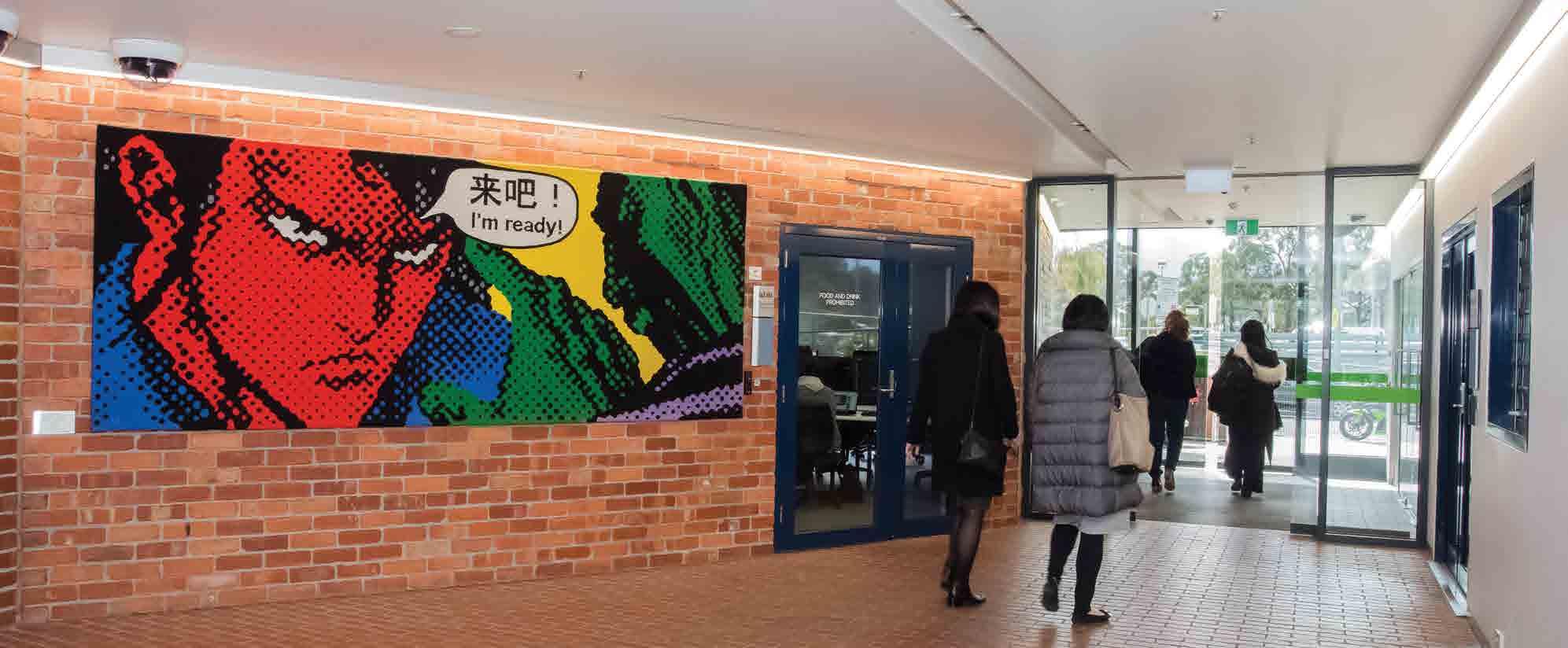
8 minute read
THINKING BRAVE
These past few weeks have seemed like an extraordinarily busy period in the working life of our art gallery team. Packing up the previous exhibition and the setting up of a major new exhibition, incorporating dance, light works and opera singing; conducting an online webinar with alumni; hanging new acquisitions in the main library; facilitating interns and their research project on collection items; processing artwork donations; chasing up copyright permissions; photographing works; drafting media releases; posting on social media and changing over artworks in the Chancellery at the Geelong Waterfront Campus, is but a small sample array of the tasks that unfold in any given week. Preoccupied with such demands, it is sometimes difficult to understand the purpose and reasoning of what we are doing.
In the midst of everything, have had a couple of moments of reflection. Art Collection Officer Claire Muir and I observed a second-year visual art student posting his working collages inspired by Jenny Watson’s amazing Yellow Painting 1975. He was hanging them temporarily for assessment on the glass façade in close proximity to the prominent painting in building P. On a different occasion whilst hanging another artwork, a photography student stopped me in my tracks to inquire about the art and how we handle and display works on campus.
Having joined Deakin a little more than a year ago I am still getting to understand the histories, details, and texture of the Collection and the University community. Deakin was formally established in 1974 as one of the first Universities in the country to specialise in distance education and the first to be established in regional Victoria. 1976 saw the establishment of Deakin at Waurn Ponds, Geelong, by the merger of Gordon Institute of Technology’s higher education courses and Waurn Ponds site with the State College of Victoria at Geelong (previously “Geelong Teachers College”). 1977 saw the first students enrolled on campus. With high hopes and enthusiasm Peter Anderson, artist and then Head of Art and Design Centre became the inaugural curator of the Collection from 1977 –1979 working from the former textile mills in Pakington Street, Newtown.1
The 1980s saw further amalgamations across the Victorian higher education sector with the State College of Victoria (Toorak), the Burwood State College and Rusden State College joining with the Prahran College of Advanced Education and become Victoria College.
The Victoria College Collection had a long and fascinating development spanning over fifty years of acquiring by its antecedent institutions. One such institution, Burwood College, took over the new premises in 1954 and with many new buildings and bare walls the then lecturer in charge of art, Max Dimmack, circulated a letter requesting donations from his artist friends and colleagues. This call out resulted in significant works being donated by William Frater and sculptor Clifford Last. 2 Not long after a levy of one pound on student fees was instituted, to acquire further works on an ongoing basis. As well, works were purchased through the building program. In the 1970s funds provided through the Visual Arts and Craft Board of the Australia Council, provided for new acquisitions and for artist-in-residence programs, where the artists were also encouraged to donate works to the Collection.
With various disparate collections coming together, Rodney James was employed in 1985 to catalogue the Victoria College collection in its entirety for the first time and advised on the hiring of a full-time curator. 3 Mary Newsome was appointed curator in 1986. Deakin then completed further mergers with the Warrnambool Institute of Advanced Education in 1990 and then with Victoria College in 1991. These antecedent institutions and their respective collections were formally combined to form the Deakin University Art Collection under development of then curator and manager, Caroline Field.
Interestingly, the Collection came full circle in 2014 when the 1954 foundation year students from Burwood Teachers College, donated a painting to the University Art Collection by Max Dimmack called Dark Conifers 2013 in celebration of the 60th anniversary of the foundation of the Burwood Teachers College in nearby Box Hill. Sixty years later former lecturers Max Dimmack and Dr Lawrie Shears still attend the annual reunions. The painting was formally accepted by Alfred Deakin Professor Christine Ure, Head of School, School of Education, Deakin University.
After several decades of evolution, the Collection now comprises of over two thousand artworks by over eight hundred artists. Numerous colleagues have contributed enormous care, scholarship and research to the Collection in this time. Curatorial and collections staff alumni include Ben Curnow, Sandra Bruce, Jane Devery, Victor Griss, Roxanna Richens, Emma Busowsky Cox and Claire Muir amongst others.
For the last ten years, the Collection has been developed and overseen by Leanne Willis, Manager Art Collection and Galleries. Willis’s careful stewardship and collection management have advanced the presence of visual arts significantly in the Deakin community, with the addition of the main library gallery space and Deakin Downtown Pop-Up Gallery. Willis’s leadership saw the acquisitions budget re-established and development of donation programs, resulting in holdings of the Collection growing significantly in her tenure.
Maintaining and developing the Collection demonstrates the University’s interest in the study, patronage and advancement of the visual arts in Australia. With the aim of expanding and enriching the Collection, potential acquisitions of contemporary importance are examined and appraised for their cultural merit, in accordance with acquisition criteria designed to preserve and enhance the character of this unique repository of works. The vast majority of Deakin’s Art Collection is on public display throughout Deakin’s four physical campuses with over a thousand works out on display at any one time.
To develop, maintain and make accessible a visual art collection of national significance and repute, reflects the cultural aspirations of Deakin University and its strategic goals of Learning, Ideas, Value and Experience.
The Deakin University Art Collection can be categorised into two principal collecting areas: Premium Collection and Special Collections. The Premium Collection comprises the University’s most prestigious artworks, which have been acquired over a period of forty years through a combination of careful purchasing, generous gifts and bequests. This collection focuses on the work of outstanding contemporary Australian artists who have a record of practice, excellence and achievement of their art form.
Many public institutions also develop areas of speciality within their Art Collections. The Deakin University Art Collection has four areas of speciality: The Sculpture Collection, The Artists’ Book Collection, The Campus Collection and The Centre for Abstract and Non-Objective Art.
The Artists’ Book Collection represents some of the most captivating and intriguing examples of Australian and international unique artists’ books and limited editions. There are few public art collections specialising in this art form. As a medium, it offers artists and audiences an opportunity for immediate and intimate experiences.
The Campus Collection consists of works across a wide range of media that includes painting, printmaking, drawing, ceramics and photography. This collection contains examples of artworks by the former student and staff alumni and celebrates the achievements and artistic endeavours of the University community. Some of these works have been acquired over a period of fifty years through purchase, awards, gifts and contributions from other educational institutions, including the Douglas McDonell State College of Victoria Art Collection.
The Sculpture Collection is a significant body of large-scale public artworks from a range of contemporary Australian artists that contribute to improving both the building, landscape and cultural environments of the four physical campuses of Deakin University. The addition of the Contemporary Small Sculpture Award to the annual exhibition program over the last nine years has also complemented the holdings of the Sculpture Collection. More spatial and context driven practices, small sculptures, maquettes and unrealised propositions for larger works have fostered breadth and depth to the Collection.
With the recent development of the University’s Indigenous Action Plan, the importance of supporting Indigenous voices and giving prominence to Indigenous Culture has resulted in significant recent acquisitions. In 2016 for example, twentytwo new artworks by thirteen Indigenous artists (including one unique artist group) were acquired for new environs of Deakin Downtown. All these artists were new to the Collection and represent some of the diversity of Indigenous voices, cultures and artistic practices in Australia. Many of these wonderful acquisitions are featured in this book, I hope you enjoy and appreciate them.
The Centre for Abstract and Non-Objective Art is a newly formed section of the Collection. This is an initiative led by Leanne Willis and artist Stephen Wickham to attract and consolidate holdings of both abstract and non-objective artistic practices.
From my time lecturing at other educational institutions, I started to think of teaching as more than just the delivery of information and content to students. The most important aspect I valued as a teacher was setting up an environment in which learning takes place. Establishing a protected setting where critical thinking and questioning was encouraged, where tough statements can be spoken, difficult truths aired. Once this space was created, learning seemed to happen at a quickened pace. When think of university life today, it’s difficult not to compare it to my own studies in the early 1990s. can remember only a few classes and lectures that attended, but I have stronger memories of student protests, projects and exhibitions. What did endure were relationships, friendships and artistic colleagues that have lasted decades. Fast track to university life in 2017, in many ways things cannot be more different with the sheer size of the student cohort, content delivered online and a user/client driven system.
The Collection plays a vital role in our current pedagogic and economic context. Connecting students with the visual stories of artists, their divergent voices, and experiences, opens up a dialogue with the past and present helping to create the learning landscape. But the Collection also tells a story about the institution, its histories and focuses over time and is living proof of the important cultural role universities play in leading society: advancing knowledge, ethics and the responsible exchange of ideas.
With art now embedded into the fabric and architecture of the University, we are exposed to the differing subjectivities of artists, their materialities and creative thinking on a daily basis. In an era where employment for graduates can never be guaranteed, how are we equipping students to adapt and change? And how are we equipping students to contribute meaningfully in their non-working lives to be more than just consumers? For the Collection, here lies its greatest purpose.
Specialisation is becoming of less significance than our abilities to change thinking and to inter-connect disciplines in new ways. Thinking around art and understanding the creative risks of the past can give us the agency and resourcefulness to evolve and change with the new situations and contexts as they emerge. The Collection can be seen then, not so much about the accumulation of objects of value but, as artist and educator Luis Camnitzer explains, “we can view it as a flexible mechanism within which our realities can be reorganised”. Art is a meta-discipline that teaches new ways of thinking and hence, through art we can meet the new world with both courage and imagination.
James Lynch Curator, Art Collection and Galleries Deakin University
1. V. Anderson, phone conversation with the author, September 13, 2017.
2. M. Newsome, Portraying Australian Culture, Victoria College Magazine, Number 5, August, 1989, pp.16-17.
3. R. James, in conversation with the author, July 11, 2017.
4. L uis Camnitzer An Artist, a Leader, and a Dean Were on a Boat… e-flux Journal #55 May 2014 http://www.e-flux.com/journal/55/60319/an-artist-a-leader-and-a-deanwere-on-a-boat/ [Accessed 7 September 2017]
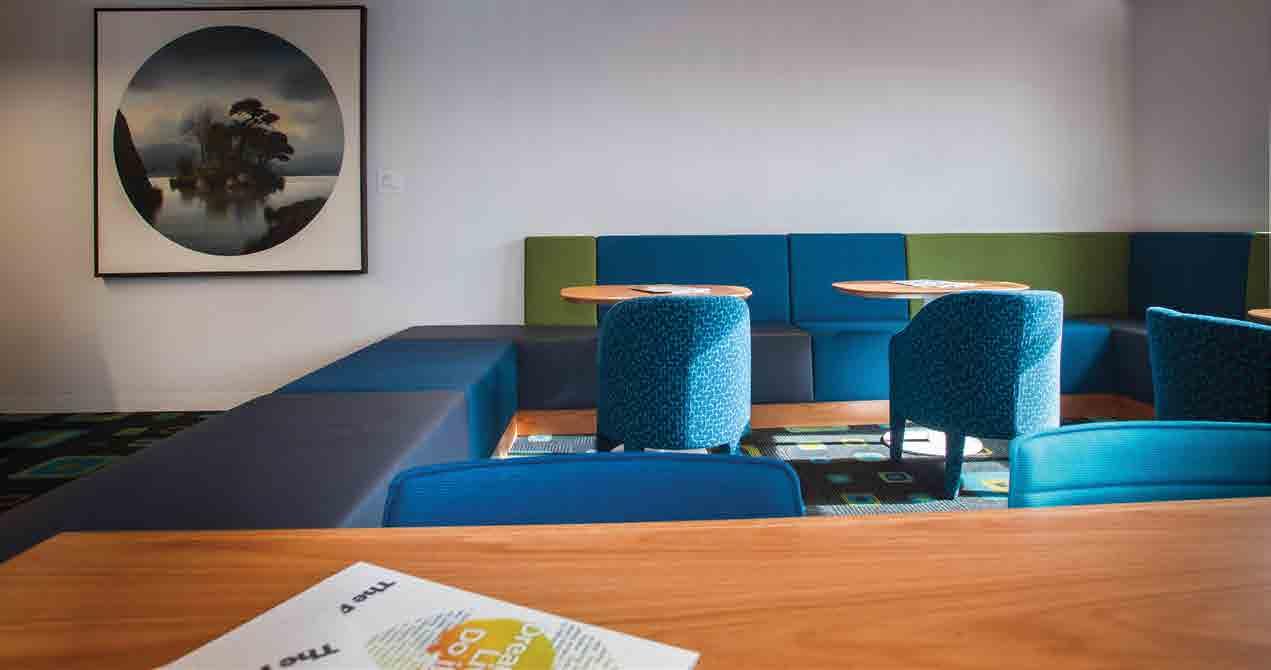
Warrnambool Campus
Library reading area
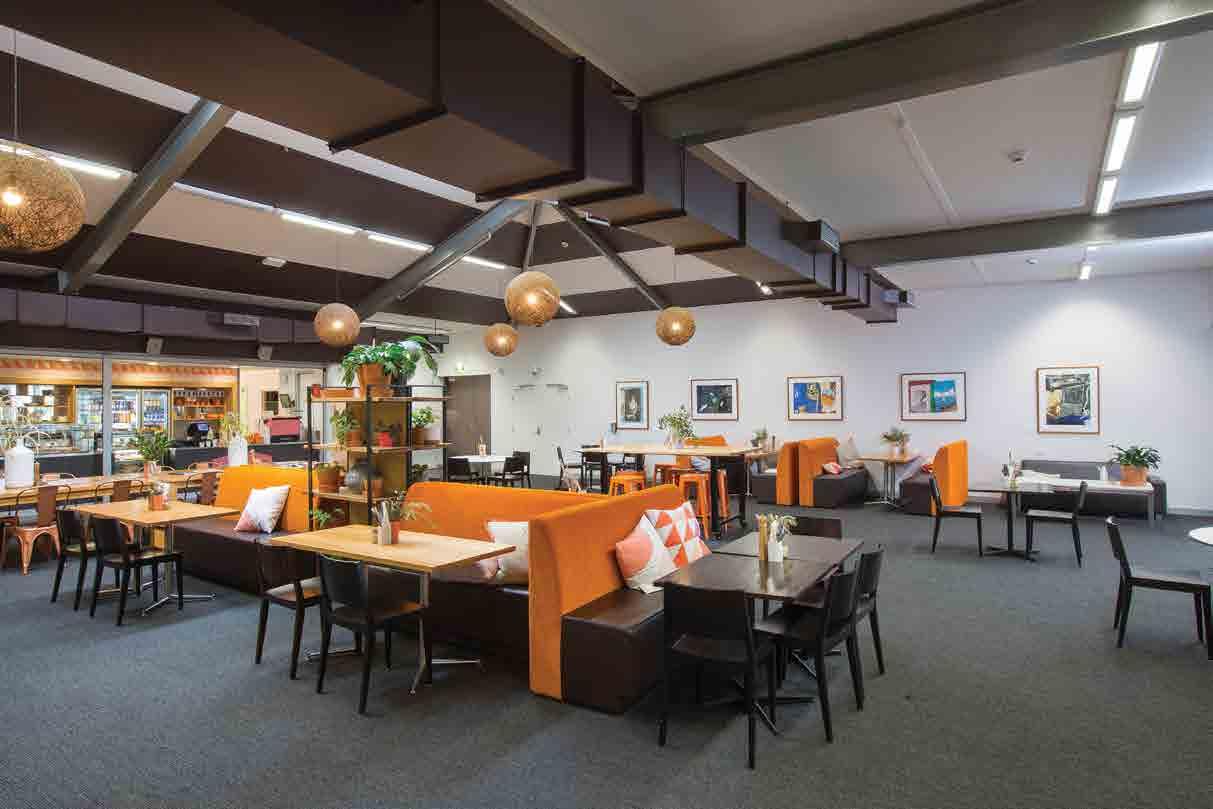
David Frazer Rest Stop 2010
Warrnambool Campus
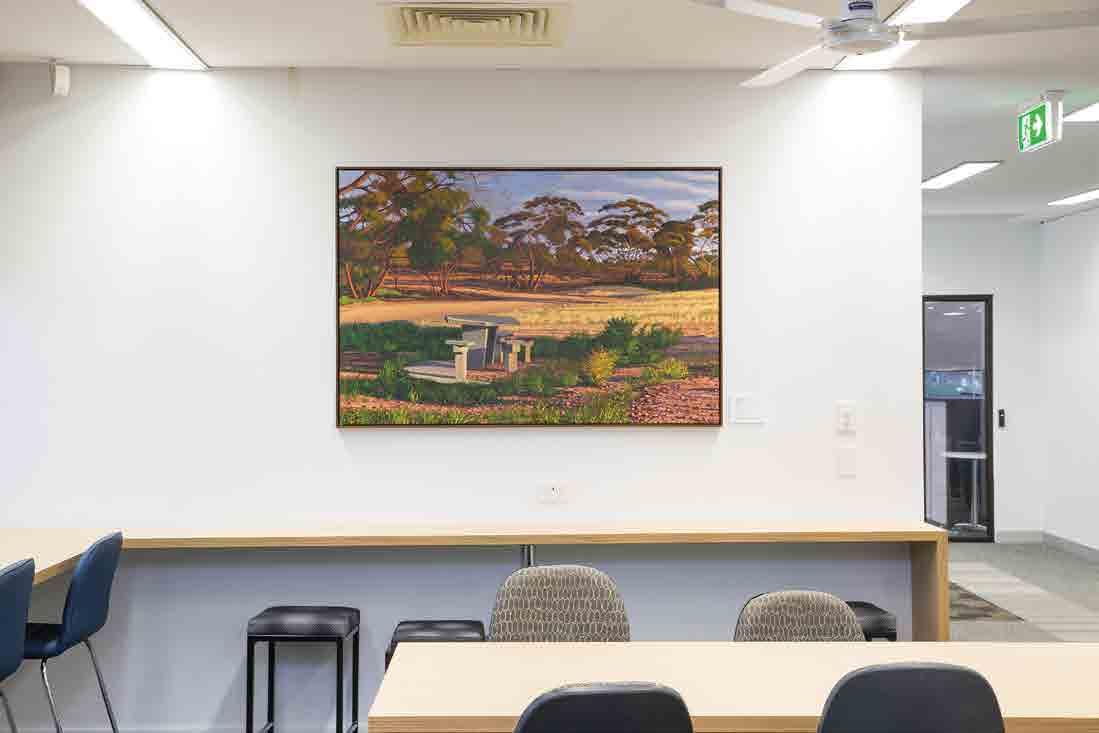
Brother Fox Cafe
Bruce Latimer
U.N. Exaggerated View 1978
Air Condition 1980
Guarded Thoughts/ Different Dogs 1978
IN OUT: IRAN 1980
Black Out Print 1977
Donated through the Commonwealth Government’s Cultural Gifts Program by the artist, 2013
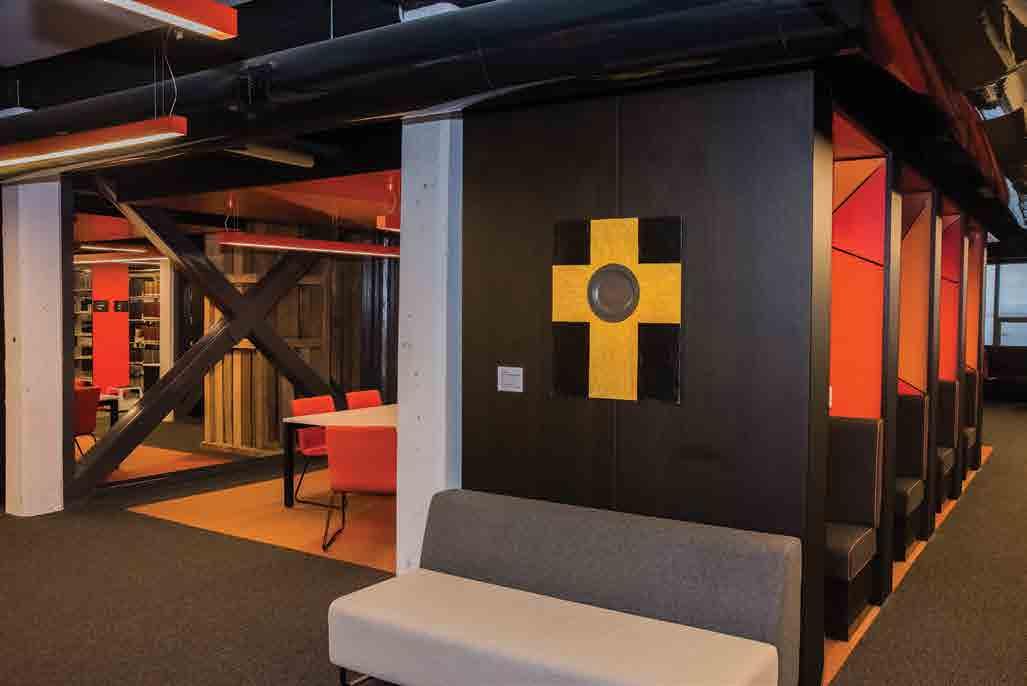
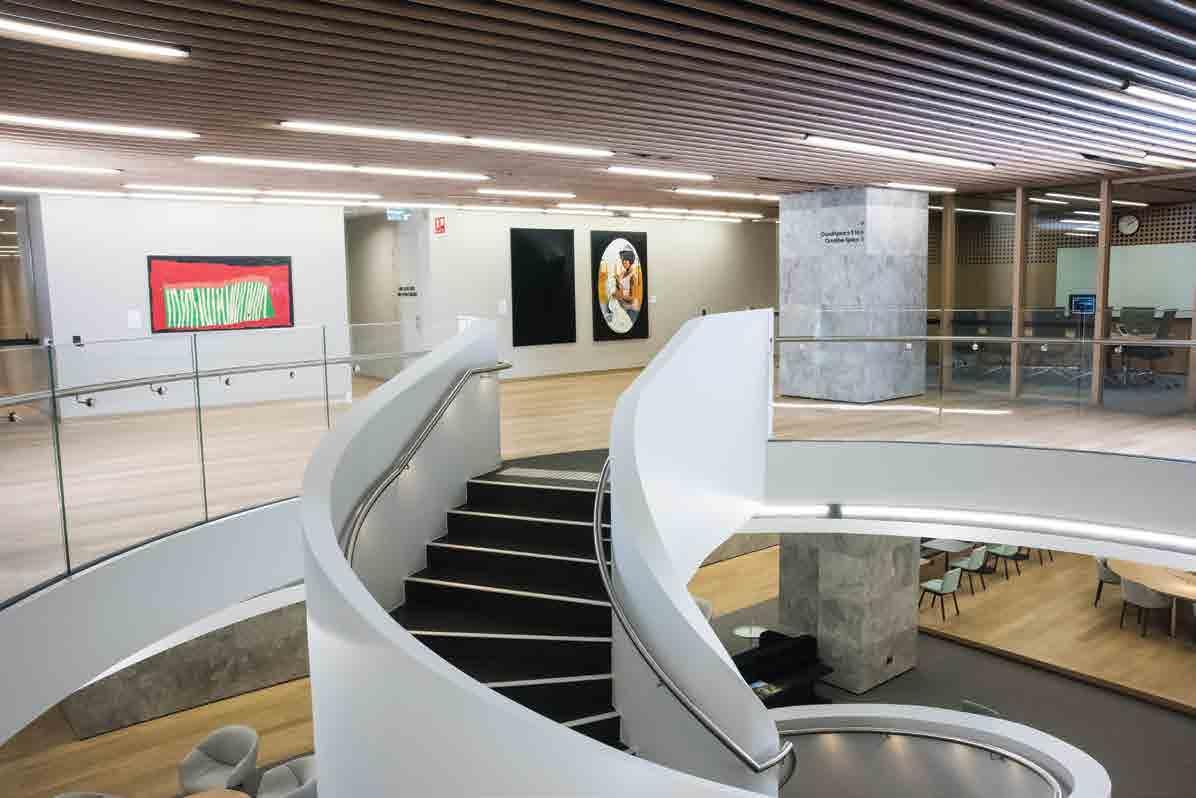
Melbourne Burwood Campus
Deakin University English Language Institute
